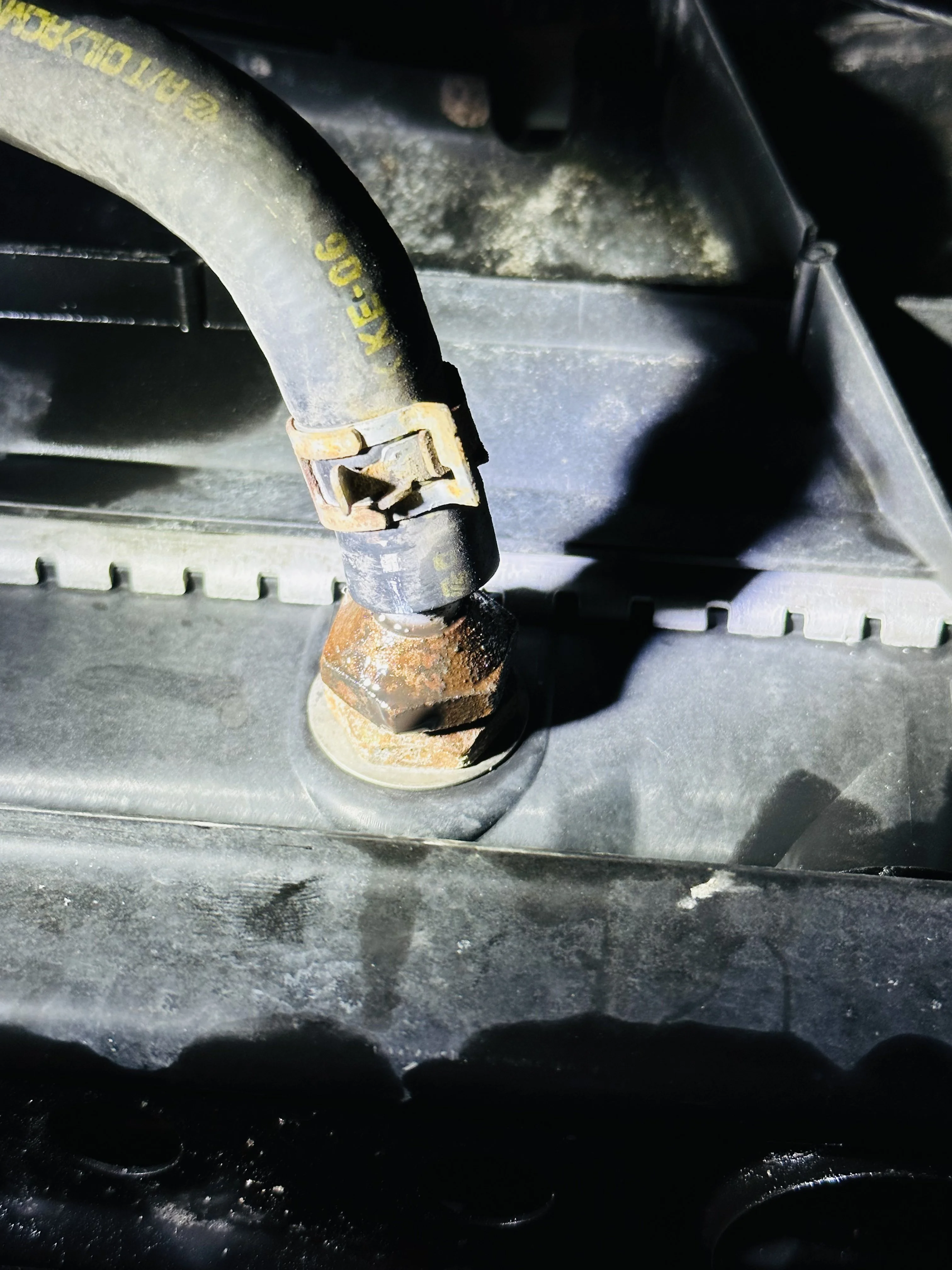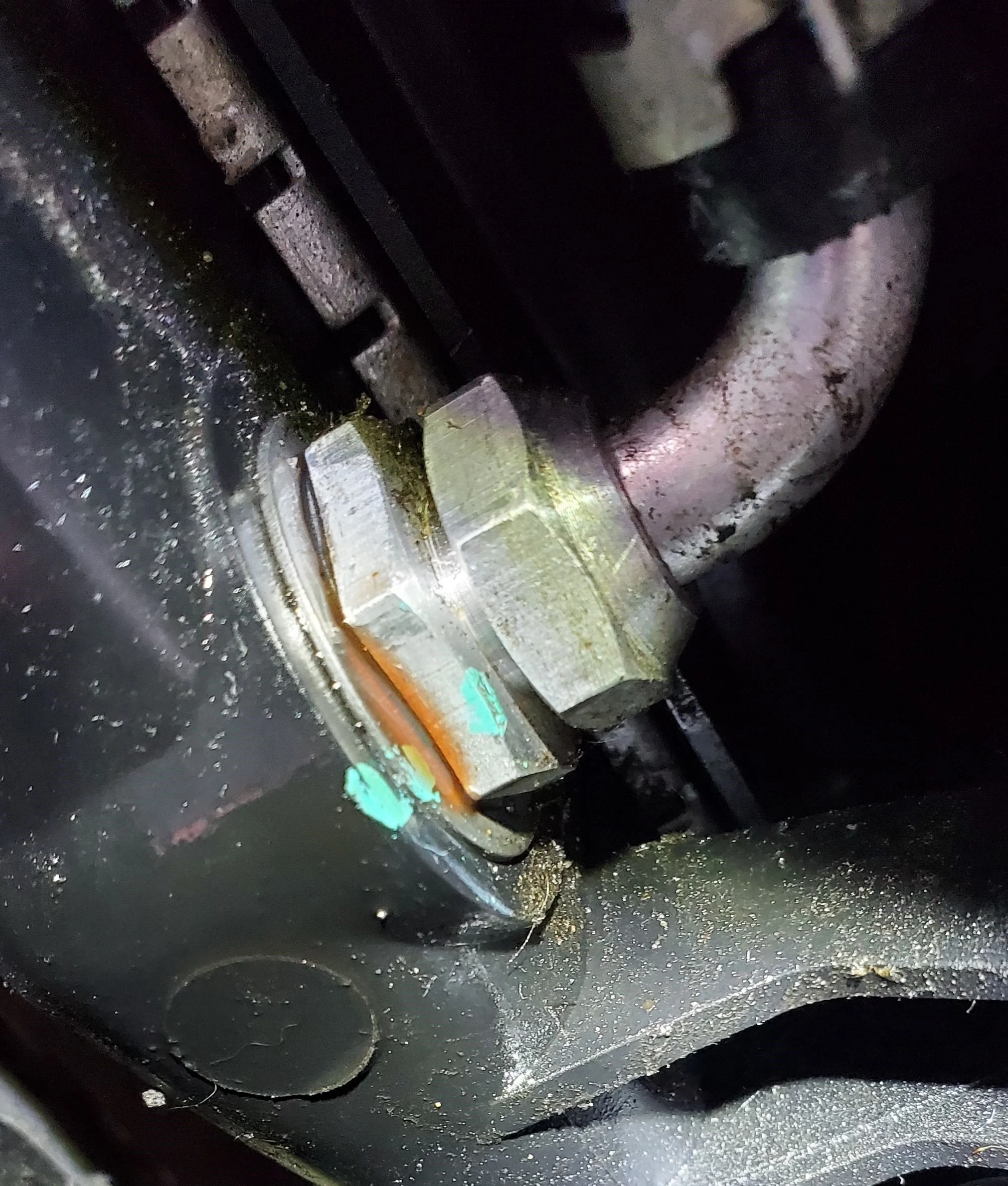


Transmission lines are responsible for carrying transmission fluid to and from the transmission cooler, which is typically integrated into the radiator. Over time, the connections between these lines and the radiator fittings can develop leaks, leading to transmission fluid loss and potential transmission damage if left unaddressed. Leaks can occur due to various reasons, such as worn or damaged seals, improper installation, or general wear and tear.

The main causes of transmission line to radiator fitting leaks can be categorized as follows:
| Cause | Description |
|---|---|
| Corrosion and Debris Buildup | Over time, the transmission cooler line fittings where they connect to the radiator can corrode and accumulate debris, causing leaks at the connection points. This issue is more prevalent in older vehicles or those driven in harsh environments with road salt or contaminants. |
| Damaged or Worn O-rings | The o-rings that seal the fittings to the radiator can become brittle, crack, or get dislodged, leading to leaks. These small rubber rings play a crucial role in maintaining a tight seal, but they can degrade due to age, heat, and exposure to transmission fluid. |
| Improper Installation | If the fittings are not properly tightened or the lines are not inserted fully into the fittings, it can cause leaks. This is often the result of improper installation or maintenance work, where the technician didn't follow the correct torque specifications or failed to ensure a proper seal. |
| Physical Damage | Dents, crimps, or bends in the transmission lines near the radiator fittings can eventually cause cracks and leaks. This type of damage can occur due to road debris, accidents, or even improper handling during repairs or maintenance. |
When a customer brings in a vehicle with a suspected transmission line leak at the radiator, the first step is to perform a thorough inspection and diagnosis. Here's how I approach it:

Visual Inspection: I visually inspect the transmission cooler line fittings at the radiator for any wetness, drips, or fluid trails indicating a leak. This can often reveal the source of the problem.
Corrosion and Damage Check: I check for corrosion buildup, damaged threads, or deformed fittings, which can contribute to leaks.
Line Movement Test: I attempt to move the lines slightly to check if they are loose in the fittings, which could indicate a poor seal or improper installation.
O-ring Inspection: If the leak source is not immediately apparent, I remove the lines from the radiator fittings and inspect the o-rings for cracks, brittleness, or dislodging, which can cause leaks.
Once the cause of the leak has been identified, it's time to address the issue. Here are the common repair procedures I follow:
If the o-rings are the culprit, the repair process is relatively straightforward:
Disconnect the transmission lines from the radiator fittings.
Remove and replace the o-rings with new ones of the correct size.
Apply a thin coat of transmission fluid or sealant to the new o-rings before reinstallation to ensure a proper seal.
If the fittings are heavily corroded or damaged, they need to be replaced:
Remove the old fittings from the radiator carefully to avoid damaging the radiator housing.
Install the new fittings using thread sealant and tighten to the specified torque to prevent leaks.
In cases where the lines are crimped, dented, or severely corroded near the fittings, they need to be replaced:
Cut the damaged section using a tubing cutter.
Install new transmission line sections using compression fittings or flare fittings.
Ensure the new lines are routed properly without any kinks or excessive bends that could cause future issues.
While repairs are sometimes necessary, prevention is always better than cure. Here are some tips I recommend to my customers to avoid transmission line leaks at the radiator fittings:
| Preventive Measure | Description |
|---|---|
| Regular Inspections | Regularly inspect the transmission cooler lines and fittings for any signs of leaks or damage during routine maintenance. |
| Fluid and Line Replacement | Replace the transmission fluid and cooler lines according to the manufacturer's recommended intervals to prevent degradation and buildup. |
| Use Protective Coatings | Use dielectric grease or anti-seize on the fittings to prevent corrosion and galling, which can lead to leaks over time. |
| Proper Installation | If you're performing any repairs or maintenance involving the transmission lines or radiator fittings, ensure proper installation and tightening to the specified torque to avoid leaks. |
| Avoid Excessive Force | When tightening fittings, avoid excessive force that could damage the threads or deform the fittings, leading to potential leaks down the line. |
The cost of repairing a transmission line to radiator fitting leak can vary depending on the extent of the repairs needed:
| Repair | Cost Range |
|---|---|
| Replacing O-rings | $5 - $20 for parts |
| Replacing Fittings | $20 - $50 per fitting, plus labor costs |
| Replacing Transmission Lines | $50 - $200 for lines, plus labor costs |
| Radiator Replacement | $200 - $500 for parts and labor |
Labor costs at a professional mechanic can range from $80 to $150 per hour, so DIY repairs can significantly reduce the overall cost for those with the necessary skills and tools.
Transmission line to radiator fitting leaks may seem like a minor issue, but ignoring them can lead to more significant problems, such as transmission fluid loss, overheating, and potential transmission failure. By understanding the causes, performing proper inspections, and following the appropriate repair procedures, you can address this problem effectively and prevent further damage to your vehicle.
Remember, regular maintenance and preventive measures can go a long way in avoiding these leaks altogether. As a mechanic, I've seen firsthand the benefits of addressing these issues promptly and correctly, ensuring a smooth and reliable driving experience for my customers.
The most common symptoms are transmission fluid leaks or drips around the radiator area, and low transmission fluid levels if the leak is severe.
Yes, if left unaddressed, a severe leak can lead to low transmission fluid levels, overheating, and potential transmission failure.
Visually inspect the fittings and lines for wetness, corrosion, damage, and check if the lines are loose in the fittings.
Common tools needed include wrenches, a tubing cutter, thread sealant, and compression or flare fittings for line replacement.
It's not recommended to drive with an active leak, as it can lead to further fluid loss and potential transmission damage.
Transmission cooler lines should be replaced according to the manufacturer's recommended intervals or if they show signs of damage or excessive corrosion.
Exposure to road salt, contaminants, and harsh environments can accelerate corrosion on the fittings over time.
Yes, if the fittings are not properly tightened or the lines are not fully inserted, it can lead to leaks.
These products help prevent corrosion and galling, which can cause leaks over time.
Yes, DIY repairs can significantly reduce costs compared to professional labor charges if you have the necessary skills and tools.

Sarah isn't your average gearhead. With a double major in Mechanical Engineering and Automotive Technology, she dived straight into the world of car repair. After 15 years of turning wrenches at dealerships and independent shops, Sarah joined MICDOT to share her expertise and passion for making cars run like new. Her in-depth knowledge and knack for explaining complex issues in simple terms make her a valuable asset to our team.






